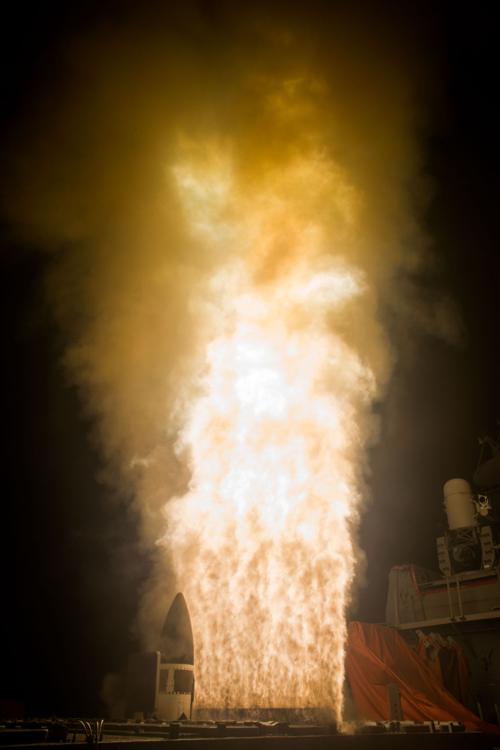The U.S. Navy and Missile Defense Agency successfully completed the first intercept flight test of a longer-range ballistic missile interceptor made by Tucson-based Raytheon Missile Systems.
In a test late Friday off Hawaii, crew members of the USS John Paul Jones launched a Standard Missile-3 Block IIA that intercepted and destroyed “a land-launched target resembling an advanced ballistic missile threat” in space, the company said.
It was the third flight test and first intercept test for the SM-3 Block IIA, part of a joint development effort with Japan, and the longest-range ship-based ballistic missile interceptor under development by the U.S.
The test keeps the program on track for sea deployment and land installation “in the 2018 timeframe,” Raytheon Missile Systems President Taylor Lawrence said in a news release.
Bigger, faster and more powerful than other SM-3 versions, the SM-3 Block IIA is designed to intercept and destroy short- to intermediate-range ballistic missile threats.
As part of the Aegis Ballistic Missile Defense system, the SM-3 Block IIA is part of the third phase of a missile-defense strategy to protect Europe. The missile is expected to provide protection against longer-range ballistic missiles aboard ships and from land-based launch sites in Romania and Poland.
Besides the primary intercept objective, the recent test evaluated the missile’s kinetic warhead, warhead maneuvering system, steering controls, and booster and rocket-stage performance and separation.
Based on preliminary data, the test met its primary objective, the Navy and Missile Defense Agency said, adding that program officials will continue to evaluate test data.
“Today’s test demonstrates a critical milestone in the cooperative development of the SM-3 Block IIA missile,” said MDA Director Vice Adm. Jim Syring. “The missile, developed jointly by a Japanese and U.S. government and industry team, is vitally important to both our nations and will ultimately improve our ability to defend against increasing ballistic missile threats around the world.”
Standard Missile development and component work takes place in Tucson, with final assembly at Raytheon’s plant in Huntsville, Alabama.





